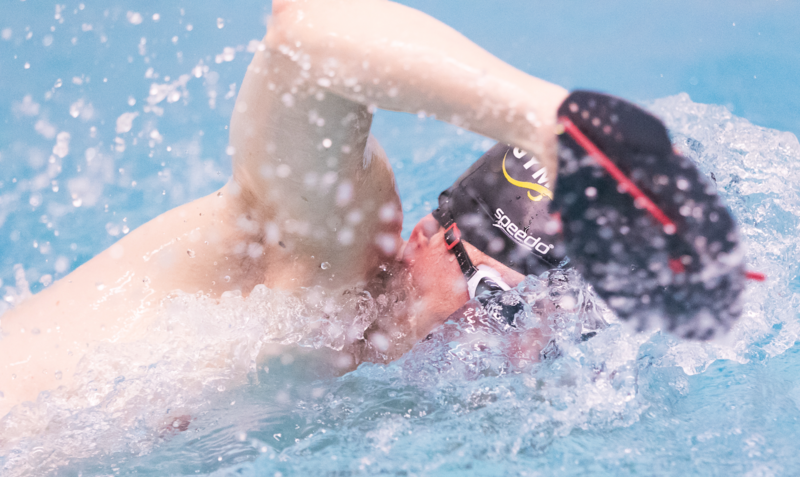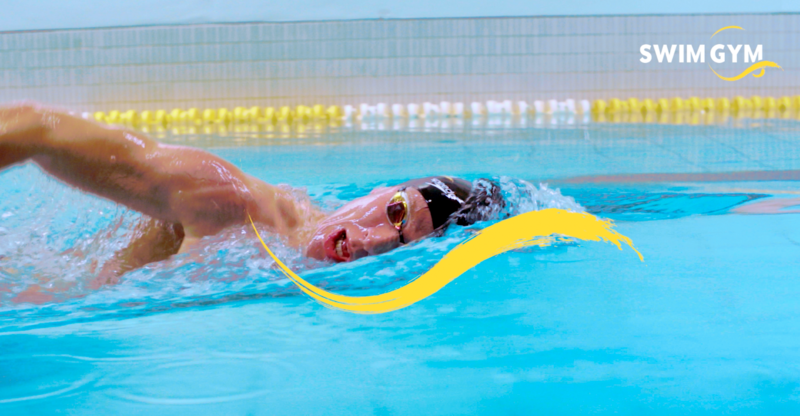Swimming blog - Breathing Hacks: Smooth and Comfortable Freestyle
Swimming is the only sport in which the face is in the water, meaning technique is needed to position yourself to breathe. The moments you can breathe are therefore limited. This complicates swimming especially when you are new to it. Breathing interrupts your body position, stroke rhythm and timing if performed incorrectly. Improving it isn't complicated. With just three breathing hacks, you will be well on your way to a comfortable and smooth freestyle.
Breath Timing
First, let’s build a smooth freestyle. Breathing should be timed in such a way that it doesn’t influence the rhythm of your stroke or your horizontal body position. The timing of the breath is always coupled to the rotation of the body. Turning the head together with the rotating body will create space for your head to turn to the side to breathe. If performed incorrectly you’ll immediately notice a hiccup in the stroke interrupting the rhythm and smoothness of the stroke.
When should you breathe you might ask? As the hand is at the end of the push off, the body rolls naturally to the side. It is then that the head should turn to the side to breathe. Simply speaking, push off and inhaling go together.

After inhaling, the head should be turned back into the water. Turn the head back halfway through the recovery just before the hand entry. The head snaps back into the center, the hip will drive back initiating rotation of the body, creating momentum, fluency and rhythm. Breathe too late and you won't be able to bring your head back in time, this will restrict and prevent the rotation of the body from happening, and thus slow you down significantly.
Breathe quickly
Turning the head to breathe and bringing it back into the water only takes a split second. You have got to be fairly quick. Breathing will always interrupt your stroke by disturbing the balance and position of the body. The quicker you are, the less disturbance there is. Thus spend as little time as possible breathing. Just long enough to get the right amount of air intake. The quicker, the better.

Breathing Patterns
Your breathing technique by now should be as smooth as a baby's bottom. Now let’s also make it comfortable. Feeling wrecked and breathless after a few lengths of swimming isn’t the way to go. Why this is happening isn’t rocket science. You’re simply sticking to one breathing pattern regardless of your body 's needs. This leads to an oxygen deficiency, leading indeed to a very uncomfortable feeling.
Adjusting the breathing pattern in accordance to the needs of the body and the effort of swimming is a skill every swimmer should have. Sprinters don’t breathe at all over a 50m sprint. Over a short sprint, your muscles do not need extra oxygen because you will finish before your body starts to fail on you.
Over longer distances your muscles need lots of oxygen in order to keep the body functioning and the muscles working properly. Therefore, the breathing pattern is adjusted to once every second or third stroke. We always advise swimmers to aim to breathe every third stroke, and combine that with breathing every second stroke when they run out of breath after a flip turn or after a short bout of faster swimming. This combination ensures that the swimmer is breathing to both sides, which brings along the benefits of bilateral breathing, but also guarantees the swimmer of enough oxygen. Best of both worlds.
As you conquer your next swim practise, start practising breathing according to need. Play around with the different breathing patterns and change it up when necessary. It will make your swimming way more comfortable. To put everything into practise give our breathing course a try. In just four weeks your breathing technique will be completely transformed. Check it out and until next time.

